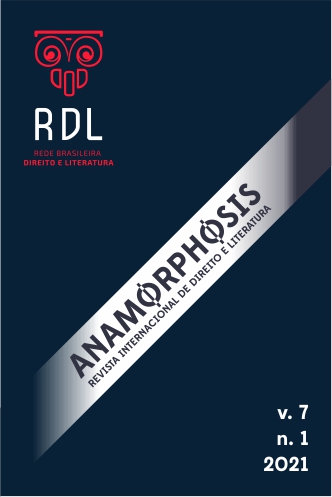A woman of thirty or so: the ages of the Constitution
DOI:
https://doi.org/10.21119/anamps.71.65-83Keywords:
Honoré de Balzac, Time and Law, Constitution, Resignification, Narrative.Abstract
This paper analyzes a so-called inconsistency in the novel A Woman of Thirty, by Honoré de Balzac: the age of Julie, the supposed leading character, does not fit the chronological framework of the narrative. Even though this inconsistency has been pointed as a possible a flaw in the creative process of the novel, it is hard to believe that, after many editions, Balzac himself would not have noticed the problem. Thus, this paper proposes a new interpretation of this apparent inconsistency, based on a different concept of time, supported by contemporary Physics, which accepts a certain simultaneously of past, present, and future. This concept also allows us to see the Constitution as a significative coexistence of the past we had and the future we wish to have in the present of the legal practice.
Downloads
References
ACKERMAN, Bruce. We, the People. Cambridge: Belknap, 1993. 3v.
AGOSTINHO (Santo). Confissões. Trad. de Lorenzo Mammì. São Paulo: Companhia das Letras; Penguin, 2017.
BALZAC, Honoré de. A mulher de trinta anos. Trad. de Rosa Freire Aguiar. São Paulo: Companhia das Letras; Penguin, 2015.
BALZAC, Honoré de. Lettre aux écrivains français du XIXe. siècle. In: BALZAC, Honoré de. Œuvres Diverses. Paris: Gallimard, 1996. v. 2. Bibliothèque de la Pléiade.
COMPAGNON, Antoine. O demônio da teoria: literatura e senso comum. Belo Horizonte: UFMG, 2006.
FERREIRA, Aurélio Buarque de Holanda. Dicionário Aurélio. 5. ed. São Paulo: Positivo, 2010.
FREUD, Sigmund. Luto e melancolia. In: FREUD, Sigmund. Obras completas. Trad. de Paulo César de Souza. São Paulo: Companhia das Letras, 2010. v. 12. p. 170-194.
GALUPPO, Marcelo Campos. Cervantes, Borges e eu: Quem é o autor da Constituição? Anamorphosis – Revista internacional de Direito e Literatura, v. 4, n. 2, p. 407-424, jul./dez. de 2018. Doi: http://dx.doi.org/10.21119/anamps.42.407-424.
IELPO, Rodrigo. Balzac e a narração do presente. Entreletras, Araguaína (TO), v. 3, n. 2, p. 159-174, ago.-dez. 2012. Disponível em: https://sistemas.uft.edu.br/periodicos/index.php/entreletras/article/view/960. Acesso em: 20 set. 2020.
KARAM, Henriete. Espaço-tempo e memória: a subjetividade em «Le Temps rétrouvé», de M. Proust. Tese (Doutorado em Letras)-Universidade Federal do Rio Grande do Sul, Porto Alegre, 2008. 607 f.
MORAES, Eliane. Introdução. In: BALZAC, Honoré de. A mulher de trinta anos. Trad. de Rosa Freire Aguiar. São Paulo: Companhia das Letras; Penguin, 2015. p. 7-18.
RICOEUR, Paul. Tempo e narrativa: a intriga e a narrativa histórica. Campinas: Papirus, 1994, v. 1.
ROVELLI, Carlo. A ordem do tempo. São Paulo: Companhia das Letras, 2018.
Downloads
Published
How to Cite
Issue
Section
License
I grant the journal ANAMORPHOSIS the first publication of my article, licensed under Creative Commons Attribution license (which allows sharing of work, recognition of authorship and initial publication in this journaL - https://creativecommons.org/licenses/by/4.0/).
I confirm that my article is not being submitted to another publication and has not been published in its entirely on another journal. I take full responsibility for its originality and I will also claim responsibility for charges from claims by third parties concerning the authorship of the article.
I also agree that the manuscript will be submitted according to the journal’s publication rules described above.

